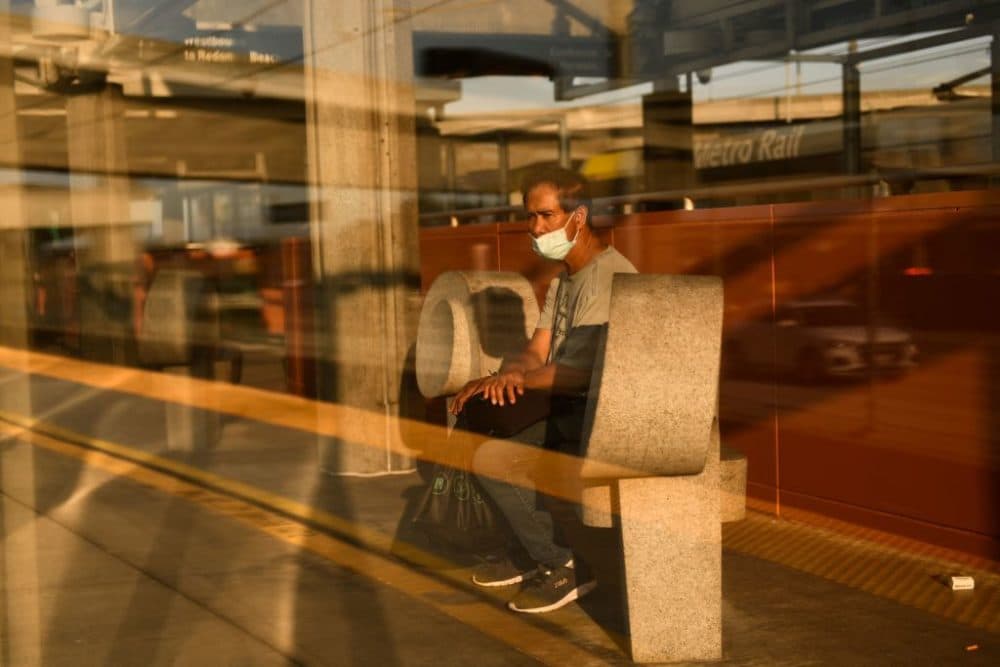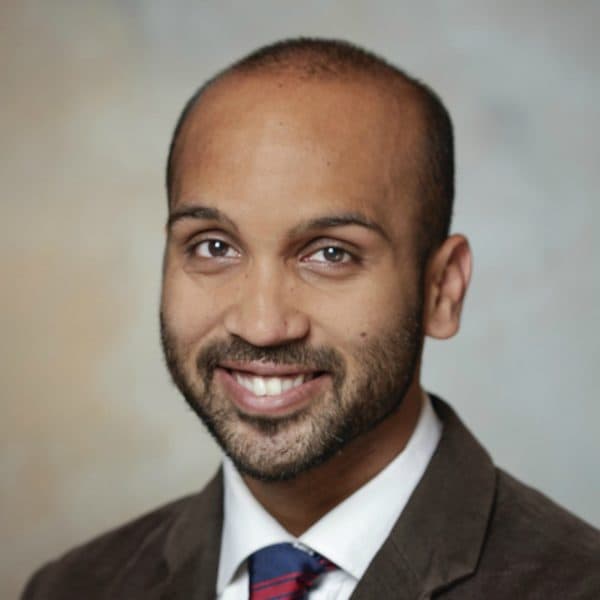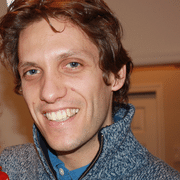Advertisement
Commentary
People are asking the wrong question about masks

The CDC announced last week that nearly 70% of Americans live in areas where it is safe to be unmasked indoors — whether we are adults shopping in supermarkets or children riding in yellow school buses. As COVD mitigation policies are lifted in step with falling COVID rates across the country, many are applauding the loosening of restrictions. Others recognize that the surge of the omicron variant has ebbed but not disappeared — and that 1 million Americans will have died from COVID by this spring.
We are infectious diseases physician-scientists, and our well-informed and thoughtful colleagues are nearly as divided on the issue of masks as the rest of America. Despite being in possession of the same training and the same data, we infectious disease experts are hardly a monolith. Why?
First, our perception of risk is informed by where we live and the patient populations we serve. Second, the risk and benefit perception of a young colleague without kids differs from that of a young colleague with unvaccinated children — or that of an older colleague with medical comorbidities. And third, many of us are gauging the risk to our credibility — and our ability to guide the public — given the rapidly changing guidance on masks throughout the pandemic. You’ll recall that masking policies have been among the most contentious of all, in part due to early missteps in messaging from public health agencies.
Some of our colleagues believe that unmasking when rates are low will give the public a breather from the rigors of COVID mitigation. They believe this would also dispute the increasing criticism that public health professionals are nervous Chicken Littles. Others counter that unmasking now may result in mask-hesitancy later, when cases surge or a new variant appears. Of course, these colleagues also point to many other factors to argue against relaxing measures: the transmission dynamics of omicron, underreporting of cases, risks to the immunocompromised, and the unvaccinated status of children under five years old.
Masks have been clearly established as an excellent mitigation strategy. They slow the transmission of the virus and decrease the number of viral particles reaching uninfected people. Fewer viral particles means that vaccine-acquired immunity is more likely to prevent infections. And even if an individual develops a breakthrough infection, a smaller viral inoculum, thanks to the mask, may translate to less severe disease.
[O]ur well-informed and thoughtful colleagues are nearly as divided on the issue of masks as the rest of America.
But in our opinion, to mask or not to mask is not the question — when to mask is what we should be asking.
Accepting the reality that COVID will be with us for a long time, it’s time to think about data-driven on-ramps and off-ramps for masking and other measures to reduce viral transmission.
Think of COVID mitigation strategies, including masking, as a yellow school bus. When a school bus merges onto a busy highway, it needs to speed up quickly to merge with traffic. That’s our on-ramp: when we see an uptick in cases, the masks go on. The off-ramp to taking off our masks, is like the school bus preparing to exit the thoroughfare – the turn signal and brakes go on, as we gather more information about the science and local health system stresses. Having this sort of “on- and off-ramp” strategy in place may mean we all breathe easier knowing that when the masks go on, there is also a system in place for them to go off in the foreseeable future.
Advertisement
In the early days of the pandemic, when there was no evidence for any treatment options, some of our colleagues were hesitant to try therapies such as steroids or tocilizumab — which are now standard— without clinical trials, citing the risk of harm. Others were more open to the idea of using these medicines. Both approaches had their merits.
[I]t’s time to think about data-driven on-ramps and off-ramps for masking and other measures to reduce viral transmission.
There’s a similar discussion about which metrics to use now. The CDC is gauging risks using the number of COVID cases as well as the hospital capacity in a particular region. Some infectious disease experts point out, that with home testing kits for COVID, official tallies may underestimate rates of the disease in the community. Other colleagues think we should be using a composite of different metrics including levels of coronavirus RNA detected in sewage water as a guide. (This metric has consistently predicted rates of infection in the community and can alert us to an upcoming surge in hospitalizations approximately one week in advance.)
The COVID-19 pandemic has given the public a glimpse of science in progress. It can be unsettling when an idea that was accepted two months ago is toppled in favor of a new one, particularly when the new idea alters your way of life. Yet dissent and doubt are integral to scientific progress. This is how we move forward together.
When conducted among experts, these disagreements often prompt new work that helps to bridge the gap between colleagues and spur thoughtful revisions to public health policy. Alas, when these differences of opinion find their way into a public forum — like Twitter — members of the public may misinterpret productive scientific debate and lose faith in the scientific community. It’s part of our responsibility as scientists to model healthy debate and regain public trust.
As for us? We’re not yet ready to steer the bus of COVID mitigation to the off-ramp, but our turn signal is on.

